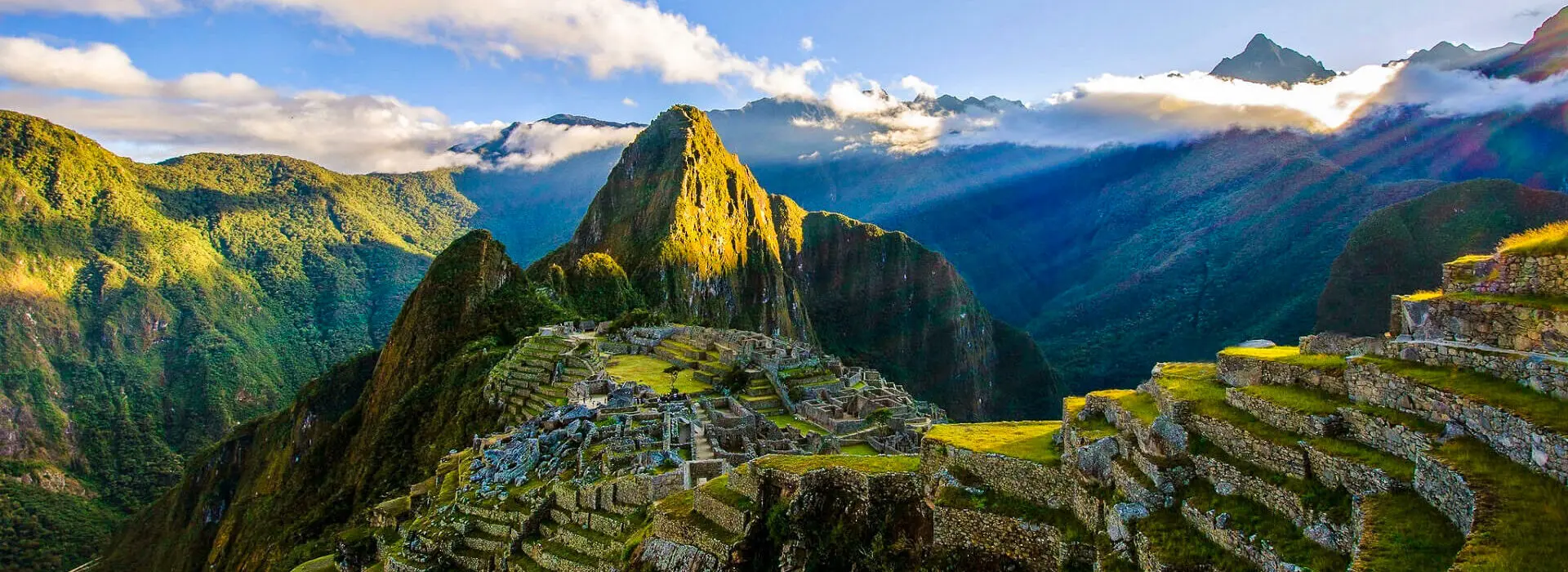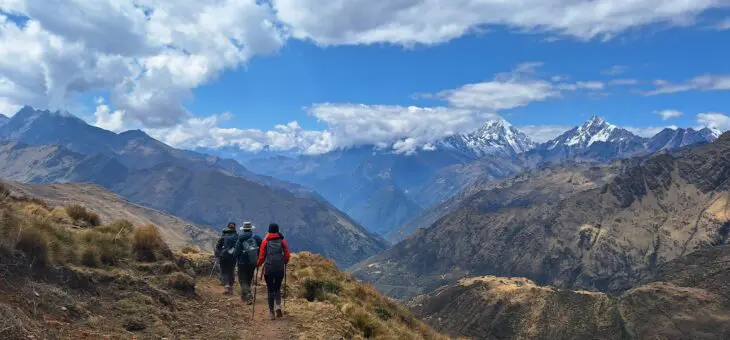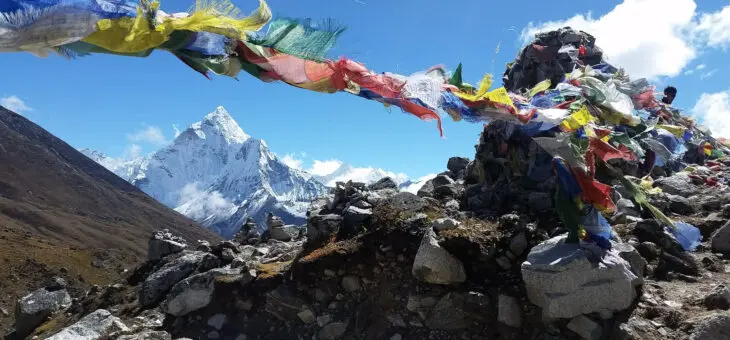By Ann Fitzpatrick, Expedition Leader Machu Picchu Trek September 2016
I was last in Peru in 2010 when heavy rains and landslides had closed off access to the ruins at Machu Picchu. My friends and I had an amazing holiday anyway but always regretted never having visited the lost city of the Incas. So I was understandably thrilled to be asked to lead this trek for Earth’s Edge, especially as the route was one of the more interesting approaches to the site. The Salkantay trek that we undertook is an adventurous journey through high altitude, cloud forest and jungle landscapes, each more rich and engaging than the last. The package that Earth’s Edge offer is a lovely mix of activity, interspersed with cultural experiences and touring. This mixture makes it a really appealing trek.
Our group met at Dublin airport on Friday 9th September pre dawn for our early morning flight. Most had travelled much further than I, some on overnight buses from Cork, Clare and Galway but the excitement for the adventure ahead was evident despite the lack of sleep. A quick sleep over in Lima and transfer on Saturday morning and we had arrived at our start point, Cusco City, the old capital of the Inca Empire in South America. As we drove into the City, it was already in the throws of weekend activity. Weekends are family time when the city is a bustling hub of festivals, marching bands, sporting events, shopping and food. The colours and flavour of Cusco are intense and ebullient. Folks had the day to explore the City at their leisure. Situated at 3,400m you find yourself running out of puff quite easily so it was important for everyone to gently acclimatise to the atmosphere. The markets and stalls quickly had the attention of most as they were drawn like magpies to the colourful wares on offer, arriving back to the hotel with armfuls of alpaca jumpers, scarves and watercolour paintings. Everyone was clearly soaking up the energy of the place and was buzzing with enthusiasm.
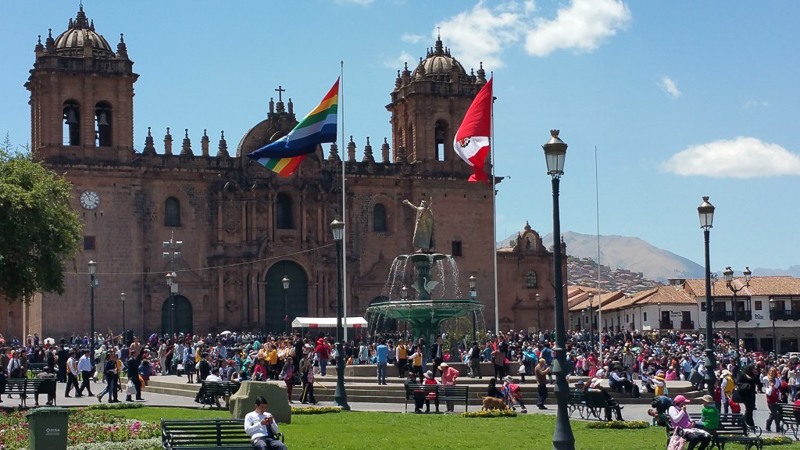
The next morning we started our tour proper with an acclimatisation walk around Cusco and its environs, hiking up lung busting steep streets and steps to the Christo Blanco overlooking the City at 3,587m. Our local guides Edgar and Maruja, who were to be with us for the rest of the week, introduced us to the Spanish architecture and older Inca substructure of the City and the Inca ruins at Saskaywaman (pronounced sexy woman by the gringos!) A visit to the San Pedro market for some fresh fruit juice and snacks for our trek finished off our city exploration. For anyone visiting, the fruit juices here are a sublime indulgence – a limitless array of tropical fruits and vegetables make for the most nutritious and flavour some concoctions you will have every tasted and all for the equivalent of €1.20! Although we were all eager to try all the delicacies on offer, the piles of Cuy (fried guinea pig – a real treat here) stacked up in the markets with their heads and tails still on kind of reigned us in
Next morning we had another very early start for the drive to the trailhead of the Salkantay trek. There was due to be a protest that day against rising electricity prices so we left the hotel at 4 am to avoid disruption however the industrious Peruvians had been at work throughout the night blocking parts of the road with tons of rock and debris. The general consensus was these guys do protests well! This delayed us only slightly as police were overseeing partial clearance to allow traffic to move. We met our horsemen and porters at Soraypampa and were underway by 9:30am. Gradually climbing through a river valley to higher altitude grassland under the hulk of Salkantay Mountain we stopped for lunch in a at a plateau at 4,300mt. Already we were feeling the effects of the altitude, shortness of breath being the most common complaint. The porters and cook had prepared the first of many amazing culinary feats, producing a 4 course lunch for us to gorge on including fresh avocado and river trout….yum! Food quickly became a talking point as the head cook managed to surpass himself daily in his ability to amaze us with his masterpieces. With good food we were well equipped to take on any challenge. After lunch we continued up to our first nights camp at Soyrococha 4,480m. A cold wind whipped through the campsite and everyone soon had nearly every piece of clothing on to keep the cold out. Our excellent Mountain Hardware tents were well up to the challenge and provided snug cocoons once everyone had their gear inside. Most of the group went off exploring the area. Climbing up the moraine behind camp to look over the Salkantay Glacier, the views were really quite stunning. Shane had lots of energy and tried his hand at a spot of bouldering. A few chinchillas and viscacha were spotted in the rocks and eagles and caracaras flying overhead added interest. Salkantay Mountain at 6,300m is one of the sacred “Apu” or holy mountains of the Inca. These Apu were often the recipients of religious sacrifices –we tried our best to sacrifice 3 half naked cork lads but the Mountain gods refused them!
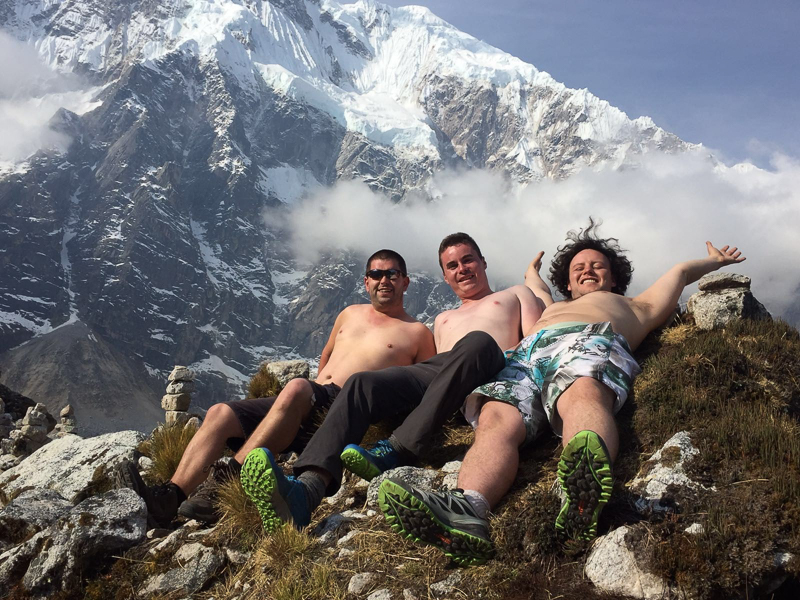
After a cold night, lots of panadol and coca tea to deal with effects of altitude we set off the next morning for the short walk to Salkantay pass, at 4,630m this was the highest point of our trek. I think most were chuffed when I explained we were a mere 179m lower than the Summit of Mont Blanc, it certainly put the effort and achievement into context. The sun warmed our bones as we posed for endless photos at the pass. By far the most photographed member of our Team was Osso our camp dog, a well-lovedand enthusiastic trekker! After a knee buckling 17km and 1,650mt of descent we arrived at our second night’s camp at Collapamapa. We journeyed through the rocky alpine terrain into cloud forest and finally dusty jungle into man eating mosquito territory. The campsite at Collapampa is on a plateau overlooking the junction of 3 valleys and is truly a spectacular setting. It’s a community initiative and has a small bar and a shower- neither of which was expected on our remote adventure but both of which were used enthusiastically!
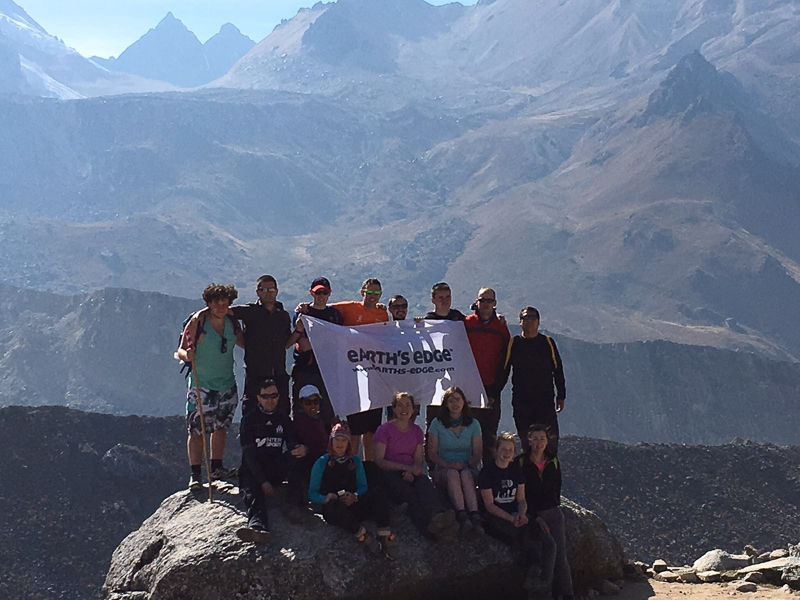
Wednesday morning we continued through the jungle on what Edgar described as undulating terrain- ehh our quad and calf muscles tired from the previous day’s descent certainly were screeching out – Undulating? You must be kidding! The rich landscape, forests brimming with orchids, provided a welcome distraction from the muscle burn. Terraces of vegetables and fruits alongside massive landslides across the slopes demonstrated the challenges for those eking out a living here. We saw a lot of evidence of slash and burn practices in the jungle which further exacerbates soil instability and loss of virgin habitat on these steep valley sides. A difficult issue considering the challenges faced to provide enough for a growing population. The hike was interspersed with stops at farm stalls to gorge on fresh juices and freshly picked passion fruit which grow wild on vines using the jungle trees as trellis to climb. We arrived at the end of our trail at lunchtime, and I led the troops like wildebeest to a watering hole into the river to soak tired feet and muscles in the cold water. After a good soak we were whisked off to a nearby coffee plantation for a delicious Peruvian style BBQ, not unlike a Fullacht Fia, the meat and veg are wrapped in banana leaves and buried under hot rocks to slowly cook. After a good feed our lads took on the Peruvians in a game of 5 aside, or more correctly 4-6 aside. Our lads did well considering the balance favoured Peru and they managed a 1-1 draw. The plantation owner Pepe then treated us to a tour of his smallholding and a lesson in coffee harvesting and processing. His farm is only 2 ha and is totally organic; coffee trees grow amongst fruit and other indigenous trees. A clever mix of companion planting provides pollination, fertilisation and protection for his crop which is picked by hand. The entire group agreed this visit was one of the highlights of the tour as it showed a real insight into how people live here. That evening we set up camp in the nearby village of Santa Theresa where we were also treated to a visit to hot springs from where we watched eagles soar, swift’s group feed and the moon rise from behind the giants of mountains that surrounded us. It was very special.
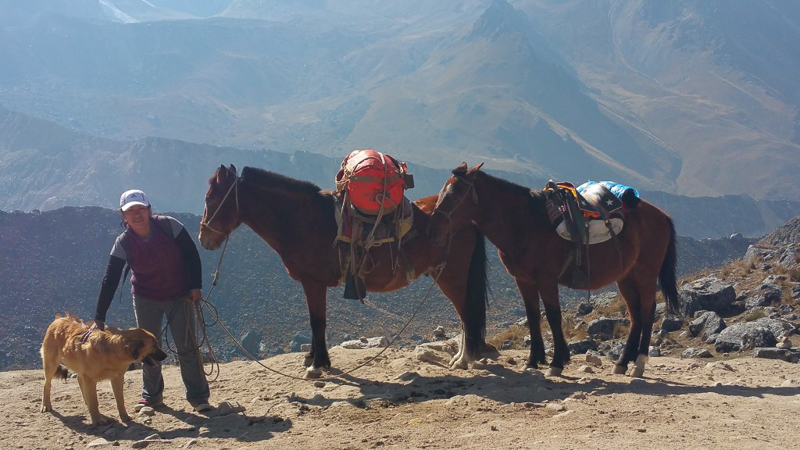
Next morning we set off for Hidroelectrica to walk to Aguas Calientes. The route here follows the Urubamba River, the most sacred of all rivers to the Inca, through the jungle. This snakes along the bottom of immense mountains and cliffs on top of which is perched the Inca City of Machu Picchu. Our first glimpse of the site, grasped at such a distance, impresses the loftiness and remoteness of the city’s location and immediately in still’s a sense of awe and immense intrigue at those who created such phenomenal creation in that eyrie.
We strolled on into Aguas Calientes, which is like walking into the set of a western but tourists rather than cowboys fill the streets. The train tracks run through the centre of town and it is a bustling hub of tourism, the last post departure point for Machu Picchu. We settled into our hotel and had an afternoon of leisure as we had a 4am start the next morning. Wifi and phone signal reconnected the group with the rest of the world and provided a temporary distraction.
An early start on Friday had us on site in the Inca ruins of Machu Picchu by 6am. The beaming grins from the first view over the terraces and view towards Huayna Picchu confirmed everyone’s delight in having made it here. Edgar provided an in depth knowledgeable tour of the site for 2 hours and then we made our last hike up to the summit of Machu Picchu Mountain. A 16oom ascent, it’s no picnic. A steep stone staircase winds itself up the side of the hill topping out at 3,061m – but what a culmination to our trek, the views were just spectacular and everyone was brimming with a great sense of achievement. We had the afternoon to explore the rest of the city at our leisure and most stayed till closing time to soak it all up.
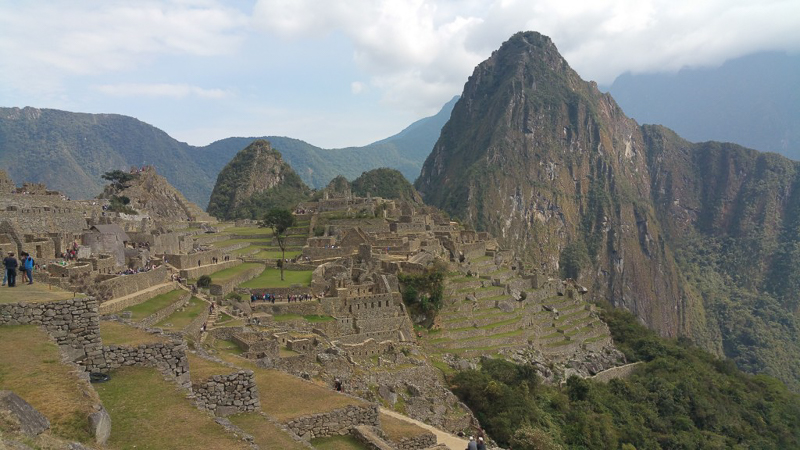
Our journey back to Cusco was by train through the sacred valley to Ollantaytambo and then transfer by bus. We stopped on route to visit a textile community collective where we were treated to a demonstration on extraction of pigments and dye’s from locally sourced plants, which are used to make the colourful textiles associated with the local Quechua people. A sumptuous celebration dinner in Cusco brought our trip to an end and we said goodbye to our 4 Cork lads who were continuing on to Bolivia (watch out Bolivia!!). The rest of us began our journey home and back to regular life, enriched with a sense of achievement, adventure and new found friendship…oh and of course just a few mozzie bites to remind us where we have been 🙂
Ann
For more info on our 2017 packages email – info@earths-edge.com.
